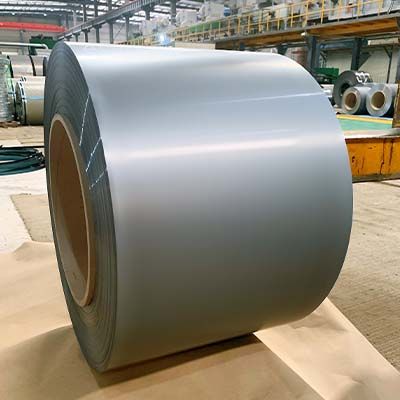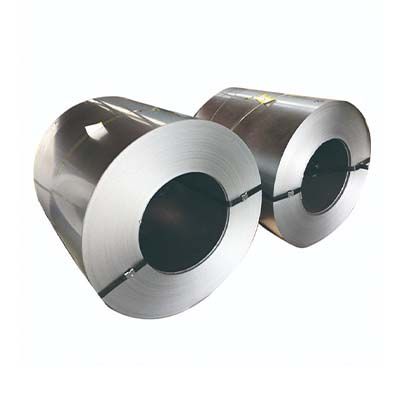Silicon steel, also known as electrical steel or transformer steel, is a crucial material in the world of electrical engineering. It possesses unique magnetic properties that make it highly desirable for various applications, particularly in the manufacturing of transformers, motors, and generators. In this article, we will look closer at silicon steel magnetic properties and discover its significance in the electrical industry.
Silicon Steel Magnetic Properties
Silicon steel exhibits remarkable magnetic properties that are specifically tailored for electrical applications. Let's explore silicon steel magnetic properties and understand how they contribute to the material's exceptional performance.
1. Saturation Magnetization
Silicon steel possesses a high saturation magnetization, which refers to the maximum amount of magnetic flux density a material can achieve under an applied magnetic field. With its high saturation magnetization, silicon steel ensures efficient magnetic flux flow and minimizes energy losses during operation.
2. Low Core Losses
One of the primary reasons for employing silicon steel in electrical devices is its low core losses. Core losses occur due to magnetic hysteresis and eddy currents within the material. Silicon steel's unique magnetic properties help minimize these losses, enhancing energy efficiency in transformers, motors, and generators.
3. High Magnetic Permeability
Magnetic permeability refers to a material's ability to conduct magnetic flux. Silicon steel exhibits high magnetic permeability, allowing for efficient flux conduction and maximizing the performance of electrical devices. This property is particularly crucial in transformers, where it enables the stepping up or stepping down of voltage levels.
4. Low Coercivity
Coercivity measures a material's resistance to changes in its magnetization. Silicon steel possesses a low coercivity, making it easy to magnetize and demagnetize. This characteristic significantly reduces energy consumption during the operation of electrical devices, making them more environmentally friendly and cost-effective.
5. Electrical Resistivity
Silicon steel's electrical resistivity plays a crucial role in minimizing eddy currents, which are circulating currents induced by changing magnetic fields. By offering high electrical resistivity, silicon steel restricts the flow of eddy currents, preventing energy losses and ensuring optimal device performance.
6. Lamination: Combating Eddy Currents
Lamination is a technique used further to mitigate the effects of eddy currents in silicon steel. The material is typically manufactured in thin laminations, which are then stacked together. These laminations create a path of high resistance for eddy currents, effectively reducing their impact on device efficiency.
Factors Influencing Silicon Steel Magnetic Properties
Various factors influence the magnetic properties of silicon steel. Understanding these factors is essential for designing and optimizing electrical devices. Let's explore some of the key elements that affect the magnetic behavior of silicon steel.
1. Silicon Content: Striking the Right Balance
The silicon content in electrical steel significantly affects its magnetic properties. Increasing the silicon content improves electrical resistivity and reduces core losses, making the material more suitable for applications with high-frequency magnetic fields. However, an excessively high silicon content can lead to brittleness and hamper the material's manufacturability.
2. Grain Orientation: Aligning Magnetic Domains
The grain orientation in silicon steel is critical for achieving desired magnetic properties. The material is often subjected to heat treatment and mechanical stress to align the grain boundaries and magnetic domains. This process enhances the material's magnetic performance by reducing magnetic losses and improving permeability.
3. Thickness: Balancing Trade-Offs
The thickness of silicon steel influences its magnetic behavior, with different applications requiring different thicknesses. Thicker laminations can handle higher magnetic flux densities but may result in increased core losses. Conversely, thinner laminations reduce core losses but may have limitations in handling higher magnetic flux densities.
4. Heat Treatment: Optimizing Magnetic Properties
Heat treatment techniques, such as annealing and stress relief, are employed to enhance the magnetic properties of silicon steel. These processes help refine the grain structure, reduce residual stresses, and optimize the material's magnetic behavior, leading to improved efficiency and performance of electrical devices.
5. Surface Coating: Mitigating Losses
Surface coatings, such as insulating varnishes or coatings, are applied to silicon steel to reduce eddy current losses. These coatings create a barrier between laminations, preventing the flow of eddy currents and minimizing energy dissipation.
Conclusion
Silicon steel's magnetic properties make it an indispensable material in the electrical industry. The outstanding silicon steel magnetic properties make it perfect for various electric applications. Whether it's transformers, motors, or generators, silicon steel continues to play a vital role in powering the world.






